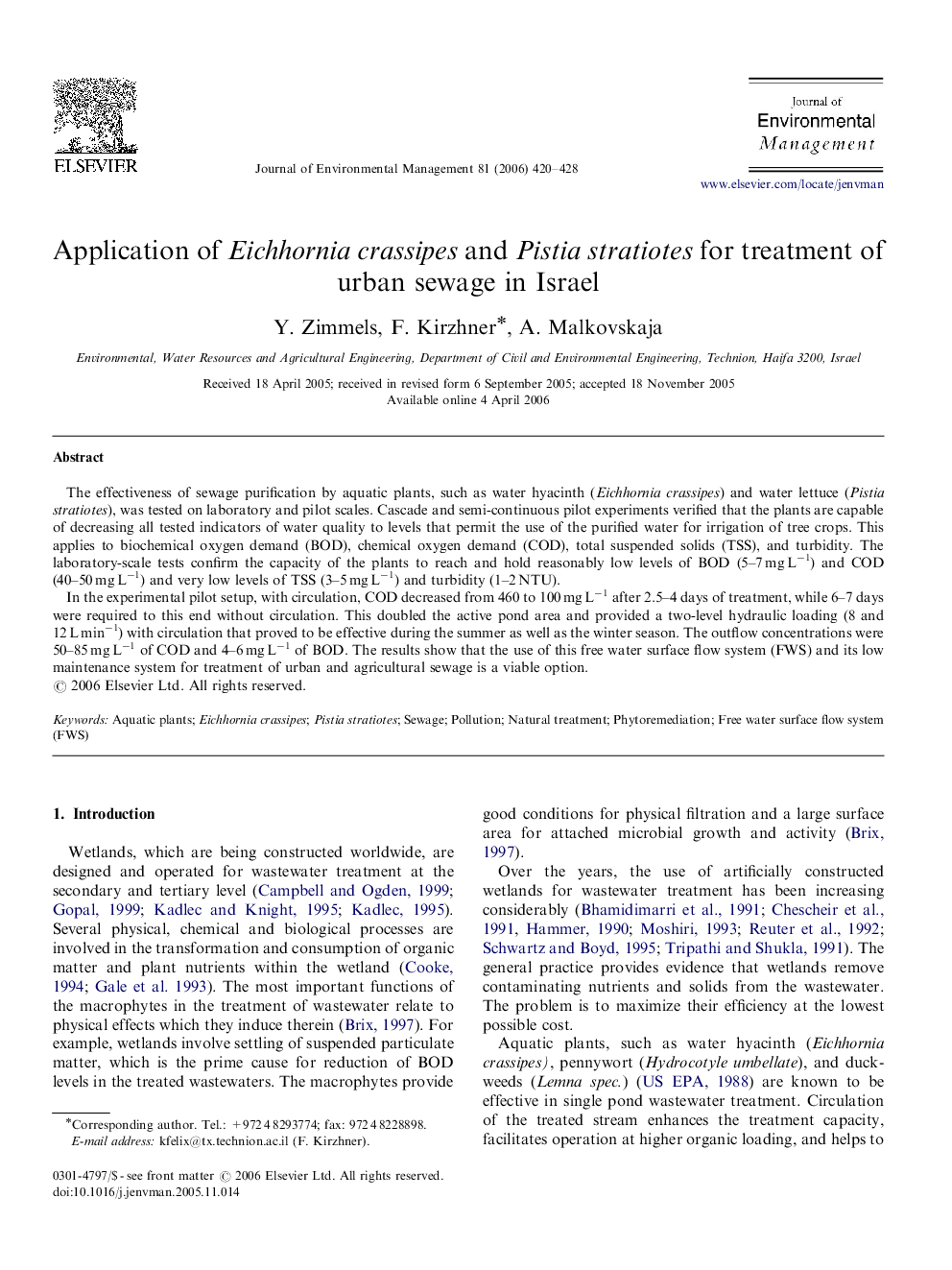| Article ID | Journal | Published Year | Pages | File Type |
|---|---|---|---|---|
| 1058958 | Journal of Environmental Management | 2006 | 9 Pages |
The effectiveness of sewage purification by aquatic plants, such as water hyacinth (Eichhornia crassipes) and water lettuce (Pistia stratiotes), was tested on laboratory and pilot scales. Cascade and semi-continuous pilot experiments verified that the plants are capable of decreasing all tested indicators of water quality to levels that permit the use of the purified water for irrigation of tree crops. This applies to biochemical oxygen demand (BOD), chemical oxygen demand (COD), total suspended solids (TSS), and turbidity. The laboratory-scale tests confirm the capacity of the plants to reach and hold reasonably low levels of BOD (5–7 mg L−1) and COD (40–50 mg L−1) and very low levels of TSS (3–5 mg L−1) and turbidity (1–2 NTU).In the experimental pilot setup, with circulation, COD decreased from 460 to 100 mg L−1 after 2.5–4 days of treatment, while 6–7 days were required to this end without circulation. This doubled the active pond area and provided a two-level hydraulic loading (8 and 12 L min−1) with circulation that proved to be effective during the summer as well as the winter season. The outflow concentrations were 50–85 mg L−1 of COD and 4–6 mg L−1 of BOD. The results show that the use of this free water surface flow system (FWS) and its low maintenance system for treatment of urban and agricultural sewage is a viable option.
